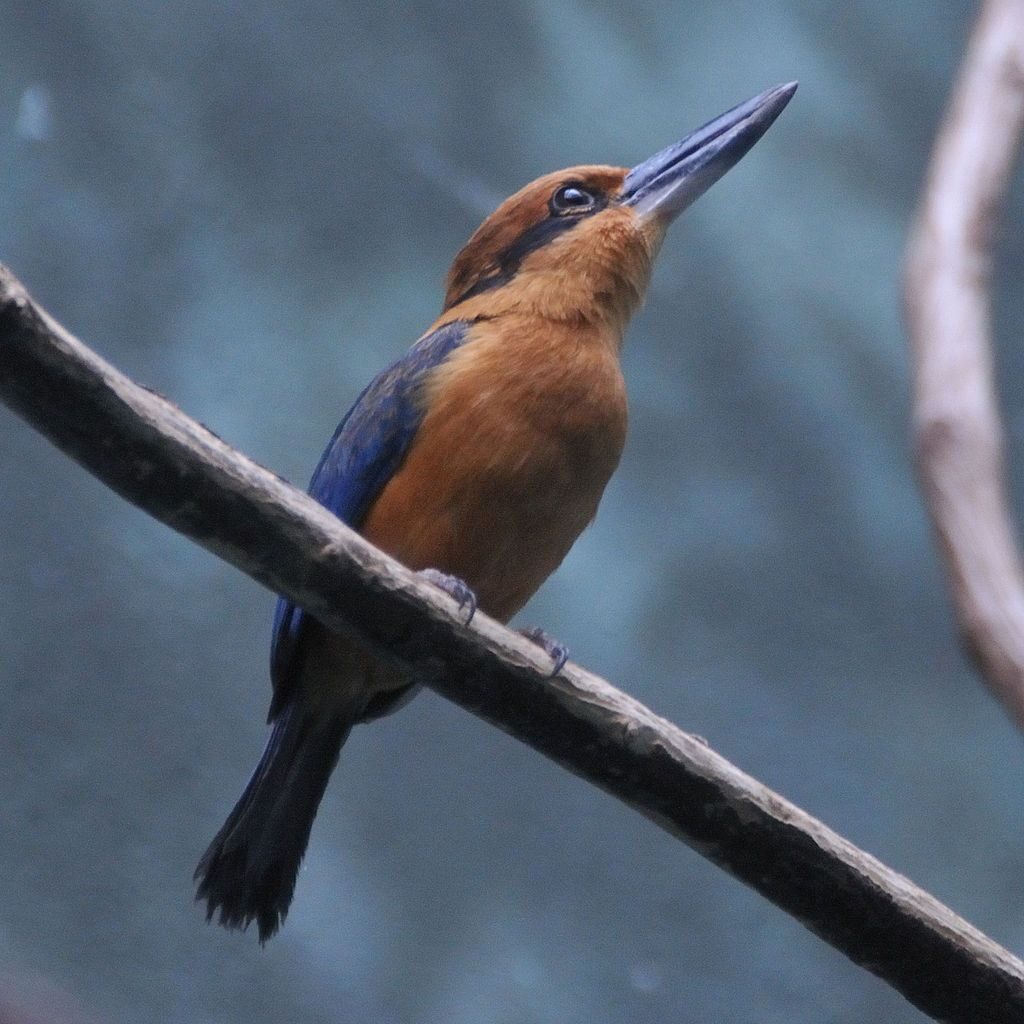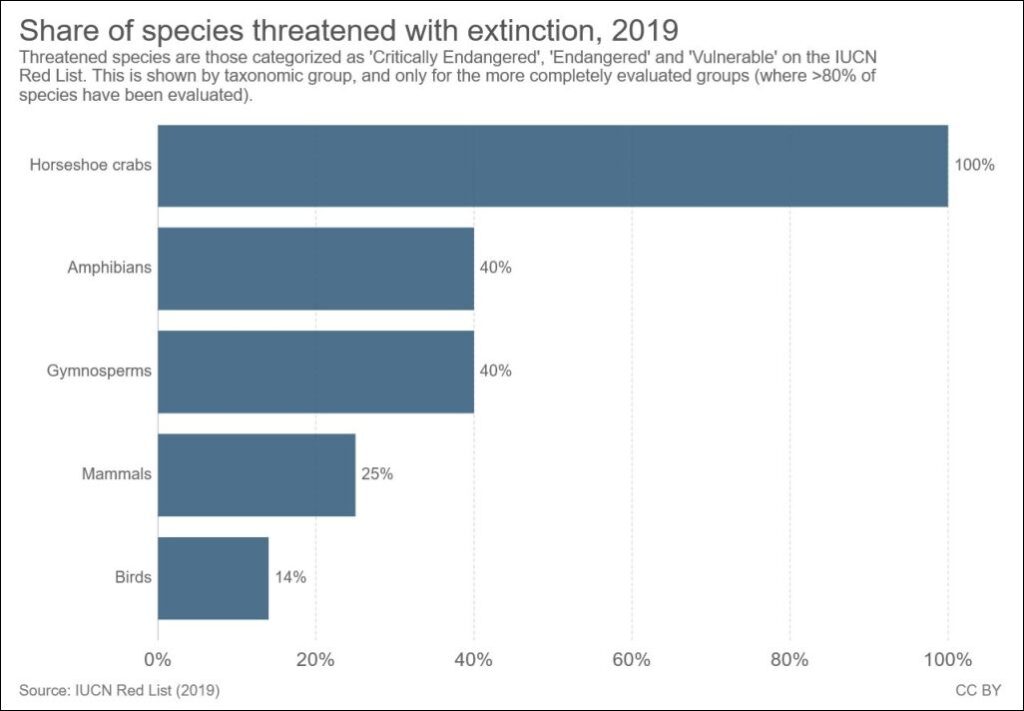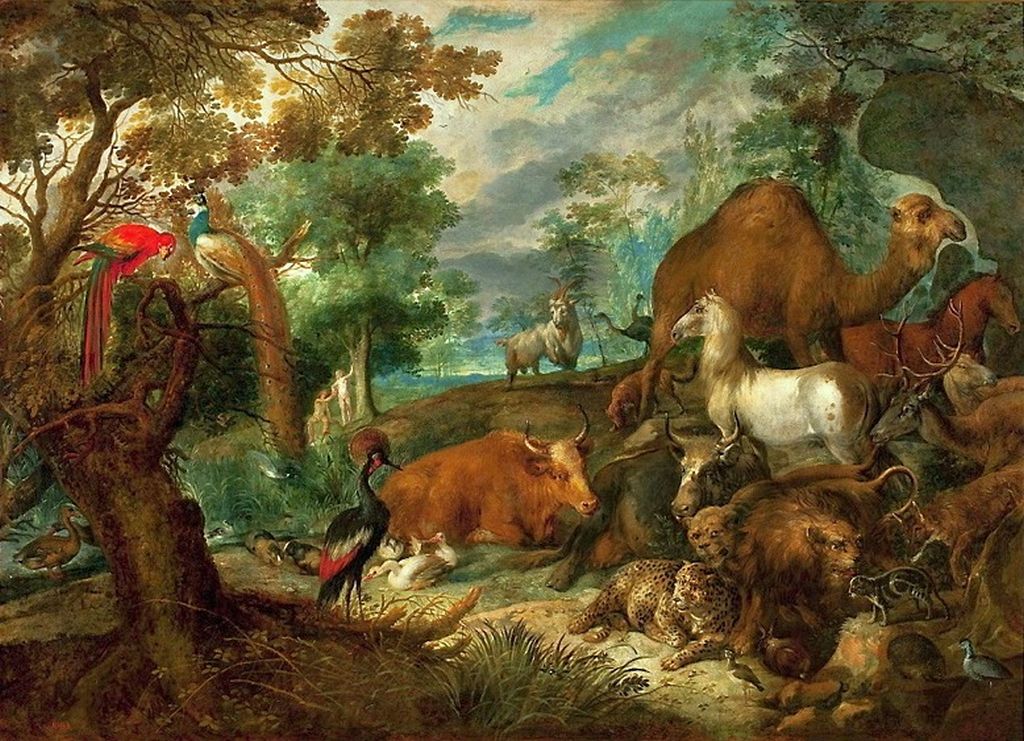
23 October 2022
The archaeological record shows that life on Earth has experienced five mass extinctions in which 70% to 90% of all species disappeared (*). After each extinction life came back.
The extinction rate today indicates we are now in the midst of a sixth mass extinction. Scientists predict that due to human pressure, habitat loss and climate change as much as 50% of all species will go extinct by 2100. [1] [2] [3] [4]
Interestingly, the IUCN Red List’s extinction ranking shows that birds may not fare as badly as many other organisms. It’s bad news for conifers, frogs and horseshoe crabs, though.

In the short term we are helping some species such as the Guam kingfisher (Todiramphus cinnamominus), shown above, already extinct in the wild and in a captive breeding program. In the long term we humans could change our ways to slow or stop species decline. Knowing humans, it doesn’t look good. We can mourn the future but if we take a very long view there is hope.
After the sixth mass extinction, what will happen next?
David Quammen‘s article Planet of Weeds in Harper’s October 1998 described the current mass extinction and asked eminent paleontologist David Jablonski “What next?” The article is quoted below.
Among the last questions I asked Jablonski was, What will happen after this mass extinction, assuming it proceeds to a worst-case scenario? If we destroy half or two thirds of all living species, how long will it take for evolution to fill the planet back up? “I don’t know the answer to that,” he said. “I’d rather not bottom out and see what happens next.” In the journal paper he had hazarded that, based on fossil evidence in rock laid down atop the K-T event and others, the time required for full recovery might be five or ten million years. From a paleontological perspective, that’s fast. “Biotic recoveries after mass extinctions are geologically rapid but immensely prolonged on human time scales,” he wrote. There was also the proviso, cited from another expert, that recovery might not begin until after the extinction-causing circumstances have disappeared. But in this case, of course, the circumstances won’t likely disappear until we do.
Still, evolution never rests. It’s happening right now, in weed patches all over the planet. … So we might reasonably imagine an Earth upon which, ten million years after the extinction (or, alternatively, the drastic transformation) of Homo sapiens, wondrous forests are again filled with wondrous beasts. That’s the good news.
— from Planet of Weeds, by David Quammen, Harper’s Magazine, October 1998
A 2018 study said the recovery time for mammals may be 3 million years, faster than predicted in Quammen’s article.
The future is a long way away but it looks bright. Earth will again have “wondrous forests filled with wondrous beasts.”

p.s. In the comments Liz Spence reminded me of a good book about the current mass extinction: The Sixth Extinction: An Unnatural History by Elizabeth Kolbert. This book won the Pulitzer Prize.
(photos and graph from Wikimedia Commons; click on the captions to see the originals)
(*) The Top Five Extinctions in Earth’s history are paraphrased below from the American Museum of Natural History and Wikipedia:
- 440 million years ago: Ordovician-Silurian Extinction: Small marine organisms died out at a time when life only existed in the oceans. 85% of all species went extinct.
- 365 million years ago: Devonian Extinction: Many tropical marine species went extinct. 70% of all species lost.
- 250 million years ago: Permian-triassic Extinction: The largest mass extinction event in Earth’s history. 90% of all species.
- 210 million years ago: Triassic-jurassic Extinction: The extinction of other vertebrate species on land allowed dinosaurs to flourish. 70% to 75% of all species went extinct.
- 65 million years ago: K-Pg (or K-T) Extinction: The event that killed the dinosaurs. 75% of all species lost.
Another excellent work on this topic is The Sixth Extinction by Elizabeth Kolbert. Pulitzer Prize winner in 2015